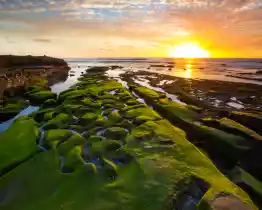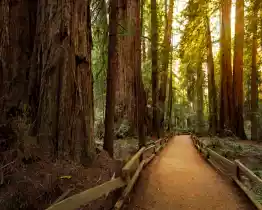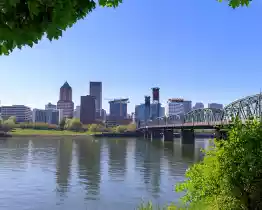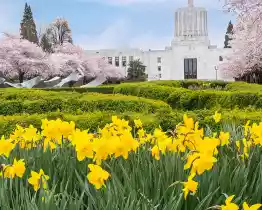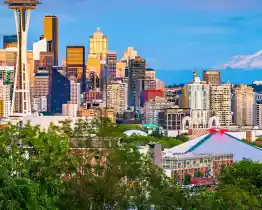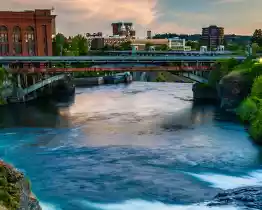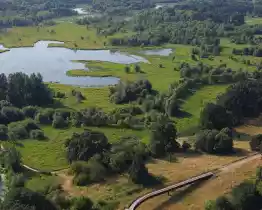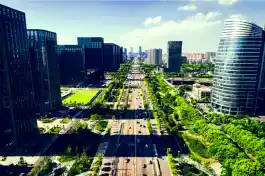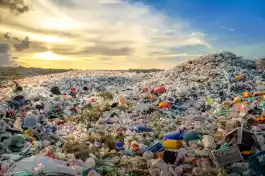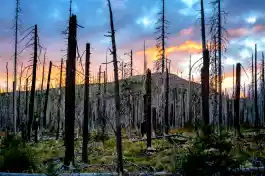Modal Header
- econews
4 of the world’s most unique ecosystems
All around the world, species live together and depend on one another. Every living thing, including mankind, is involved in these complex networks of interdependent relationships, which are called ecosystems.
There are thousands of ecosystems of various sizes on Earth, all being essential for our well-being and prosperity as they provide us with freshwater, food, and clean air. They also represent an exceptional source of outdoor recreation opportunities.
Sustaining our environment is essential for the survival of the planet’s spectacular species, which is why climate change, resource extraction and deforestation pose such a global threat. Although all ecosystems play a role in how the Earth functions, there are some that are considered irreplaceable. These majestic natural wonders are a sight to behold, and due to the effects of human intervention and climate change, some are sadly in danger of being lost.
Here are some of our most impressive ecosystems and the dedicated organizations that are working hard to preserve them.
Galápagos Islands, Ecuador

The Galápagos Islands are one of the most incredible places on Earth. Located 1,000 kilometers off the coast of Ecuador, the archipelago has a staggering 127 islands. Its unique location intersects the currents of three oceans, which formed a one-of-a-kind, diverse marine environment.
The Galapagos Islands became of interest to Charles Darwin in 1835 due to its endemic wildlife, such as giant tortoises, marine iguanas, and flightless cormorants. Inspiring Darwin’s theory of evolution, the islands remain a priceless living laboratory for scientists today. Along with thousands of tourists, illegal fishing, and non-native species, this causes a threat to the ecosystem and the people who depend on it for their food and livelihoods.
Due to the number of different habitat zones and the acute environmental differences between them, the Galapagos has an incredibly high level of biodiversity. The Galapagos Conservancy is the only U.S. nonprofit exclusively dedicated to the conservation of the Galapagos Islands. It helps to preserve, protect, and restore a healthy, balanced native plant and animal community.
Great Barrier Reef, Australia

One of the world’s seven natural wonders, the Great Barrier Reef is a prized Unesco World Heritage Site, the largest coral reef system and the biggest living structure on planet Earth. Located in the Pacific Ocean off the northeastern coast of Australia, it sprawls over a breathtaking 344,400 square kilometres, and amazingly can be can amazingly be seen from space. The reef is home to more than 1,500 species of fish, 130 different sharks and rays, endangered sea turtles and marine mammals.
Coral reefs are some of the most diverse ecosystems in the world and the Great Barrier Reef is great in every way! Because of the diversity of life found in the habitats created by corals, reefs are often called the “rainforests of the sea.” Approximately 25% of the ocean’s fish depend on healthy coral reefs. Fishes and other organisms find shelter and food, reproduce, and rear their young in the many nooks and crannies formed by corals.
Since 1975 the Great Barrier Reef Marine Park Authority (GBRMPA) have been responsible for the overall management of the Reef to ensure its preservation and conservation. They utilize leading techniques to reduce threats and improve the current and long-term outlook for the Reef and the communities that depend on it. They also work together with the Australian and Queensland government agencies, industry, community organisations, and individuals to help achieve a healthy Great Barrier Reef for future generations to come.
Canaima National Park, Venezuela
The Canaima National Park is spread over 3 million hectares of land and can be found in south-eastern Venezuela. Due to its most unique and best-known feature, the flat-topped mountains, also known as ‘tepuis’, the area was granted a Unesco World Heritage listing in 1994. The Tepuis cover approximately 65% of the park and are significant for its ecological diversity. It’s home to 5 endangered animals such as the jaguar, giant anteaters, giant river otters, ocelots, and giant armadillos. 29 species of birds and one-third of the plants found in the park are endemic to the area and found nowhere else on Earth.
One interesting thing about Canaima is its connection to Africa. A few hundred million years ago, South America and Africa were connected as part of a single supercontinent. You can see that geological history in Canaima. The sandstone rock formations in the western Sahara are very similar to the sandstone that makes up some of the Tepuis.
Greater Mekong region

Few places on Earth are as ecologically important as the Greater Mekong region. Stretching from the Tibetan plateau to the shores of Vietnam, the vast region spans six countries: China, Myanmar, Lao PDR, Thailand, Cambodia and Vietnam. Its 200 million acres contain some of the most biologically diverse habitats in the world.
This spectacular ecosystem features an abundance of rare wildlife, mangrove forests that protect coastal communities, and the largest combined tiger habitat in the world. It also supports the world’s largest inland fishery, accounting for up to 25 percent of the freshwater catch, and is an essential source of food and income for the river basin’s 70 million people.
Today, the Greater Mekong is under serious threat due to hydropower development, climate change, illegal wildlife trade and deforestation. Unfortunately this will quickly undermine the region’s natural wonders and its ability to support its people.
Along with governments and communities, the World Wildlife Fund (WWF) supports the sustainable use of land and freshwater resources across the Greater Mekong while spearheading efforts to protect its rich biodiversity.
Why Is Preserving Ecosystems Important?
In order to improve our living conditions, it’s important that we preserve our natural ecosystems. Like all living beings, humans are dependent on ecosystem services to survive. We need them for food, water and transforming raw materials into our everyday products.
For example, the agriculture that provides our food depends on the characteristics of a specific ecosystem. Cereals or vegetables grow only under certain conditions of temperature and humidity. They also need certain natural processes, such as pollination, to take place. If we change these characteristics too intensely, there is the risk that we aren’t able to crop what we produce today, or at least not in the same way.
Biodiversity is an important factor in ensuring a healthy ecosystem. An ecosystem with a wide range of producers will provide the primary consumers with a stable and varied food supply. Each species also plays a unique role in servicing the ecosystem, ensuring that it operates smoothly. Ecosystems with a high level of biodiversity are more able to recover from disasters, whether natural or man-made.

The places mentioned in this article are just some of the most amazing ecosystems discovered on Earth. Our planet is full of biodiverse ecosystems that host many flora and fauna endemic to a given region. Their beauty is not only worth appreciating, but these ecosystems are also worth protecting.
DISCOVER

Related Articles
Message
Thanks for signing up. Please confirm your email address, check your inbox and verify your email.

